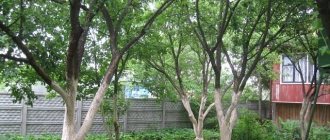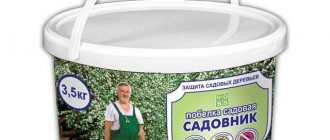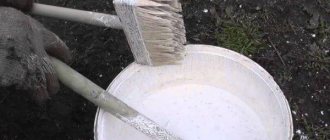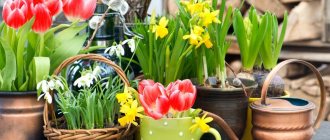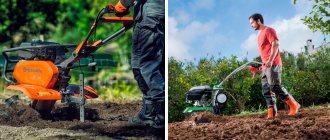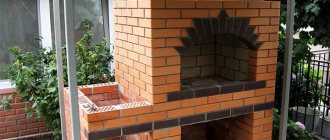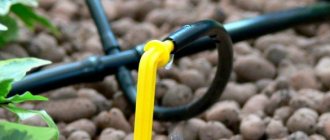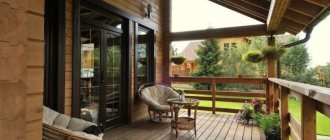Why do you need whitewashing of garden trees?
Whitewashing the trunk primarily performs a protective function
Tree bark is the first protective barrier. Over the years, it cracks, becomes rougher and thicker. Whitewashing the trunk has not only an aesthetic effect, but also an additional protective function.
So what are the benefits of whitewashing trees?
- Protecting the tree from overheating in spring and summer, and from frostbite in autumn and winter. A tree, like any other plant, is exposed to external weather conditions. The scorching sun, Epiphany frosts, winds and snow are not beneficial, and their negative impact can be reduced by whitening the bark. In spring and summer, the white color reflects the sun's rays, preventing the tree from getting burned. In autumn and winter, the outer artificially applied layer prevents the bark from cracking.
- The antiseptic effect prevents pathogenic fungi, harmful insects, and bacteria from settling in cracks, through which they can penetrate into more sensitive parts of the trunk and cause disease.
- Special solutions for whitewashing have a specific smell, which repel rodents. Whitewashing trees twice a year with lime or once a year with indelible paint can protect them from diseases and maintain a healthy appearance.
TOP best
The rating is based on popularity among buyers.
Goodhim T151
The paint has a quick-drying composition. Consumption is 120-150 g/m2. Apply paint only to the dry, cleaned surface of tree trunks and branches in 2 layers. The composition can only be used at a temperature not lower than 5°C. Goodhim T151 protects trees from pests, temperature changes, rot and fungus.
Advantages:
- long shelf life;
- convenient weight.
Flaws:
- consistency too thin;
- presence of a pungent odor.
KRAFOR
Water-dispersion paint has a quick-drying composition. Can be used for spring and autumn treatment of trees. Effectively protects wood from insects, pathogenic microflora, and ultraviolet radiation. The paint layer allows air to pass through well. Stays on tree bark for at least 1 year.
Apply KRAFOR to the surface of the wood in 2 layers at a temperature not lower than 5°C. It is recommended to apply the second layer 8 hours after the first. Drying time for paint is 1 hour. Consumption is 100-170 g/m2.
Advantages:
- no pungent odor;
- quick drying.
Flaws:
- consistency too thin;
- the color is not white enough.
Hera
Acrylic paint is used to protect trees from insect pests, rodents and spores of pathogenic fungi in the autumn and spring. Effective against ultraviolet rays, resistant to low temperatures. The paint layer allows air to pass through well and does not interfere with the trees’ breathing.
Hera can be used at temperatures not lower than 0°C. Consumption is 50-70 g/m2. Drying time – 1 hour.
Advantages:
- can be used for processing seedlings;
- efficiency.
Flaws:
- after rain it may leak;
- Before use it is necessary to mix thoroughly.
Favorite VDAK-577K
Water-dispersed acrylic paint. When painting trees, it forms a “breathing” layer. protects plant trunks and branches from temperature changes, pathogenic microflora and insect pests. Favorite VDAK-577K cannot be used at temperatures below 8°C. Consumption is 200 g/m2.
Advantages:
- resistant to precipitation;
- can be used for other work;
- dries quickly.
- The main disadvantage is the high consumption of paint.
Green Belt
Decorative acrylic paint is designed to protect plants from sunburn. Forms a “breathable” layer. Green Belt has an attractive white color.
Advantages:
- creates a dense, durable film;
- resistant to precipitation and low temperatures.
- The main disadvantage is that it has the full range of protective properties.
Fusco
Acrylic garden paint is designed to disinfect plants, protect them from pests, fungi, bacteria, temperature fluctuations, and sunburn. When pruning plants, Fasco is used to process the cuts. Paint can stimulate regeneration processes.
Advantages:
- durability of the protective coating;
- long lasting protection;
- convenient packaging:
- low cost.
No deficiencies identified.
Traffic light F4
Moisture-resistant paint is intended for use in spring and autumn. Effectively protects plants from pathogenic microflora, pests, sunburn and temperature changes. Can be used at temperatures not lower than 5°C. Consumption is 170-200 g/m2.
Advantages:
- resistance to precipitation;
- low cost.
- The main disadvantage is high consumption.
Almira
Water-based acrylic paint has antiseptic properties. Designed to protect trees and shrubs from pests, diseases, and sunburn. The “breathable” layer protects the trunks and branches of plants from freezing. The paint can be used at temperatures not lower than 5°C. Consumption is 140-160 g/m2.
Advantages:
- quick drying;
- effective protective effect.
- The main disadvantage is high consumption.
Pufas
Frost-resistant paint is widely used for treating garden trees. Apply to tree trunks in 2 layers. Designed to prevent cracking of tree bark, protecting them from various diseases, pests, sun burns and temperature changes. Can be used at temperatures not lower than 5°C.
Advantages:
- effective action;
- quick drying;
- convenient packaging.
No deficiencies identified.
Expert
The paint is intended for treating garden trees and shrubs. Effectively protects them from insect pests, spores of pathogenic fungi, sunburn, and temperature changes. Paint is applied to tree trunks in 2 layers. Can be used at temperatures not lower than 5°C.
Advantages:
- low cost;
- nice white matte color.
No deficiencies identified.
Timing of whitewashing
Professionals advise whitewashing three times a year.
- In autumn, in October-November, when the leaves have completely fallen. This is the main whitewash, as it prepares the wood for cold weather; destroys pests such as aphids, mites and moths that hibernate under the bark; Until the next whitewashing, it protects the wood from rodents and insects.
- In spring, in February-March. In early spring after thaws and snow, it is necessary to renew the autumn paint on the bark, thereby enhancing the protective effect. Spring whitewashing will prevent the premature start of sap flow, which can begin due to warm February days, when daytime temperatures reach +10°C. However, it should be remembered that at night the air temperature can drop below -10°C, which in the case of early sap flow can lead to damage to the internal structures of the tree due to the sap solidifying.
In summer they whiten as needed. The spring-summer period is rich in precipitation, which can wash off the paint from the trunk. If there is very little of it left, you need to repeat the whitewashing.
Preparing trees for whitewashing
Preparing plants for whitewashing takes place in several stages
Few people know that to obtain maximum benefits for the tree, it is necessary to carry out a number of preparatory procedures. Ignoring preparation will not only bring no benefit, but can also cause harm. The preparation itself is carried out in three stages.
First stage: Cleaning the bark
Over the course of a year, dirt and dust collect on the tree bark, and moss and lichen begin to grow. You can get rid of them by using soft fabric gloves or a sponge. Using gentle movements, we clean off all excess. In places where the bark comes off, you need to cut off the top dead layer. Waste from cleaning must be collected and burned, as it may contain pest larvae. To do this, you need to first lay any flooring (tablecloth, plastic bag, etc.) under the tree and collect all the trimmings on it.
Second stage: Disinfection
After cleaning, the wood is left without dead tissue, thereby exposing the next layer of living cells. The living layer is susceptible to infections. Disinfection will create a barrier to pathogens. The procedure can be carried out with ash lye, iron or copper sulfate, a mixture of ash and laundry soap.
Preparation of ash lye - sift the ash and add water per 0.5 kg of ash to 3 liters of water. Leave to stand for 20 minutes, then boil, but turn off as soon as the water begins to gurgle. Defend. The waste will settle to the bottom, and the top layer of liquid must be drained, because this is ash lye.
Third stage: Treatment of wounds
After all the manipulations, the wounds can be seen with the naked eye. Found wounds must be treated with garden varnish, special pastes and putties, which can be purchased at a gardening store.
The first stage of preparation is carried out in wet, rainy weather. The second and third stages are planned to be carried out on a day without precipitation, so that the treatment agents are not washed away by water.
Popular manufacturers and brands
A wide range of white acrylic paints are produced for whitewashing tree trunks and shrubs. Their purpose can be easily determined by the external design of the packaging - each bucket traditionally contains images of a garden, individual trees or fruits.
The most common and accessible products are those manufactured by the following brands:
The greatest demand among experienced gardeners is acrylic paint “Universal” from Tex. It is suitable for whitewashing any garden and park crops. This composition can be used to paint over saw cuts, cover up cracks and wounds in places where the bark is damaged. The paint dries within 60 minutes, and the applied coating is not washed off for 1-2 years.
Source: vmirekraski.ru
General rules for whitewashing
- Processing of plants is carried out only in warm weather at positive air temperatures.
Whitewashing should be carried out at a temperature of +5°C. If the temperature is lower, the tree trunks will be covered with a thin layer of ice and the paint will fall on them. They will not give the desired effect, since they will disappear at the first warm weather. - Whitewashing should be carried out in dry and clear weather, since in the rain the paint will be washed off before it has time to set.
- The paint should go on in a thick layer, so don’t skimp. The trees will return all costs with a rich harvest.
- The paint should be white. Even if part of the trunk is painted with colored paint, its base should remain white.
- For whitewashing, lime or special indelible paint is used. You can’t take the leftover regular paints out of the garage and paint wood with them!
Comments (2)
Natasha
04/28/2020 at 00:15 |
Our relatives have their own house, they whiten tree trunks every year, but I don’t remember that a relative added anything disinfectant to this composition, the same goes for the city’s public services.Answer
Yulia Expert Plodogorod
05/01/2020 at 21:24 |
Hello, Natasha! If you have not previously added disinfectants to the tree whitening mixture, we recommend changing the composition of the product used. This will increase the effectiveness of the procedure. Indeed, without appropriate preparations, the specified coating mainly protects the bark from sunburn.
If, before applying whitewash, you ignore the stage of cleaning, disinfection and treatment of wounds, problem areas can only become more vulnerable and begin to die.
The central stem and skeletal branches, especially in older plants, are often subject to cracking and the formation of cracks. This allows pathogenic bacteria, spores and harmful insects to multiply in these surface defects. Very often, whitewashing is carried out precisely in order to prevent this, and not just to give a more aesthetic appearance to plants.
As for utilities, they most likely use ready-made store-bought mixtures. They can be either with or without the addition of pest and disease control agents. You can find out for sure only by contacting the specified service.
If we are talking about large gardens with fruit plants, special preparations are added to the composition. This protects vulnerable crops from aphids, ants, fungal and bacterial diseases.
Answer
The most effective formulations
Garden centers and hardware stores offer several types of paints and varnishes intended for painting trees:
- Water-based acrylic resins. They contain fungicidal and insecticidal components, providing protection for garden crops from ultraviolet radiation, insects, bacteria, fungi and rot.
- Water-dispersed. Contains antiseptic additives that repel insects and rodents. Many coatings in this group contain latex, which gives the coating elasticity and strength.
- Alkyd. After application to the bark, they provide reliable protection from mechanical damage, moisture, icing and other atmospheric influences.
Another paint option for trees.
Any of the listed compositions can be used not only for treating trees and shrubs, but also for painting garden furniture or outbuildings.
When choosing paints and varnishes, you should carefully study the information indicated on the packaging and make sure that the paint is suitable for garden, ornamental and park plants.
